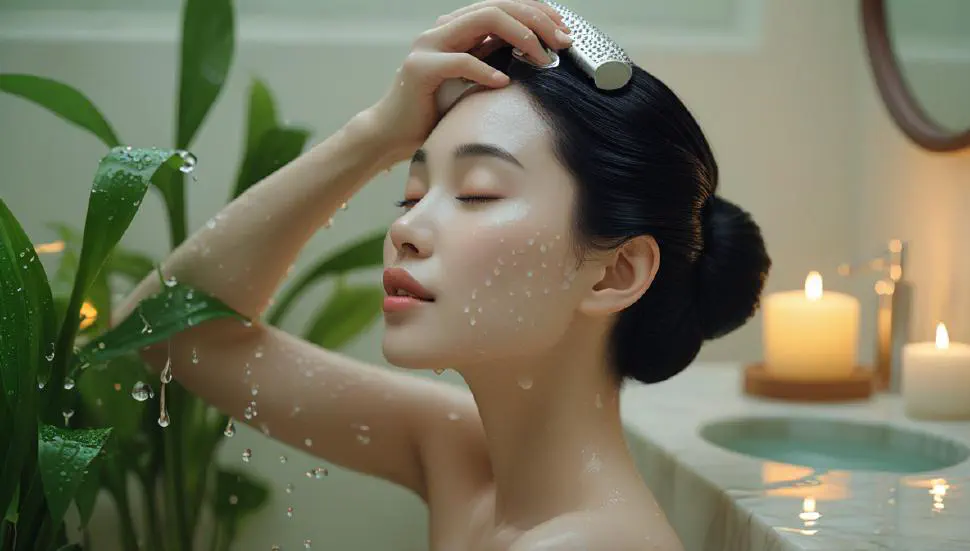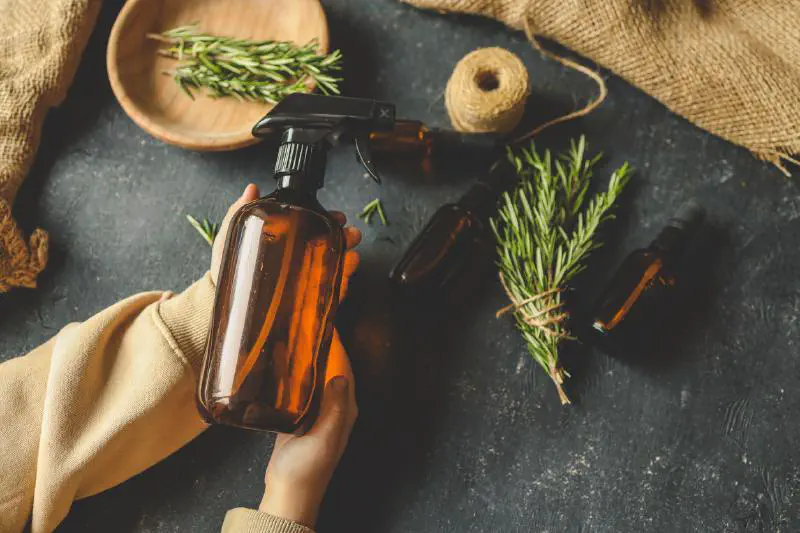Luscious locks and vibrant hair often symbolize health and vitality, yet many struggle with the common issue of hair fall. While some hair loss is natural, understanding the root causes can unveil significant insights into maintaining healthy tresses. Busting myths and grasping the truth behind hair loss is the first step to robust hair health.
Hair fall isn’t just a singular problem; it’s a multifaceted issue intertwined with hormonal shifts, genetics, nutrition, and lifestyle choices. From the genetic underpinnings of androgenetic alopecia to the impact of stress and medical conditions like thyroid disorders, the journey to understanding hair loss is as intricate as the strands themselves. Additionally, environmental factors and modern-day temptations like styling tools and products further challenge our quest for strong and healthy hair.
This article aims to unravel the complexities of hair fall, offering not only insights into its causes but also practical preventative measures and care tips. From dietary suggestions and essential oils to lifestyle changes and professional remedies, discover the secrets to nurturing and preserving your crowning glory.
Understanding Hair Fall: An Overview
Hair fall can be daunting, but understanding the reasons is key. Many factors lead to hair loss, including physical and psychological stress. Events like serious illness, surgery, or childbirth can trigger hair shedding. Medical conditions such as anagen effluvium and alopecia areata also factor in. Hairstyle choices, especially tight hairstyles, can contribute to hair loss over time. Furthermore, vitamin D deficiency plays a role, as seen in a 2018 review linking it to hair problems. Postpartum hair loss is common due to the drop in estrogen after childbirth. This usually peaks around four months postpartum and resolves within a year. Hair naturally goes through growth cycles: anagen, catagen, and telogen, with mostly 90% of hair in the growing, or anagen, phase.
Common Myths About Hair Loss
Many misconceptions cloud the topic of hair loss. A common myth is that finding hair on your brush or pillow signals hair loss, yet shedding up to 100 hairs a day is normal. People often think hair loss affects only older adults. However, conditions like alopecia areata can strike both adults and children unexpectedly. Hair loss isn’t only hereditary. Medical conditions such as thyroid disorders, stress, and lupus can cause hair loss. These highlights show that triggers can be diverse. Another myth is that temporary hair loss doesn’t recover, but conditions like telogen effluvium usually see hair regrow after stressors fade. Finally, many believe that hair loss from medications is permanent. In reality, hair growth often returns to normal when the medication is stopped. Understanding these myths is crucial in managing expectations and seeking the right treatment.
Causes of Hair Fall
Hair fall is a widespread concern affecting many individuals. Understanding its causes can help in addressing the problem effectively. While some factors are beyond control, others can be managed with proper care and lifestyle adjustments. Common causes include hormonal changes, genetics, nutritional deficiencies, stress, medical conditions, and environmental factors. Each cause can trigger different types of hair loss, and recognizing these triggers is the first step toward finding a solution. By identifying the root cause, you can implement targeted approaches to maintain healthy hair and encourage growth.
Hormonal Imbalances
Hormonal imbalances are a key reason for hair loss in both men and women. During events like childbirth or menopause, changes in hormones such as estrogen and progesterone can lead to hair thinning. Conditions like polycystic ovary syndrome (PCOS) also contribute by affecting hair on the temples and front of the scalp. Men’s hormones, such as testosterone, can alter and cause hair problems too. Birth control methods, especially in those with a family history of hair loss, can further impact hair health. Addressing hormonal imbalances with a healthcare professional can alleviate these issues.
Genetic Factors: Androgenetic Alopecia
Androgenetic alopecia is a common hereditary hair loss condition, known as male or female pattern baldness. It affects millions in the United States, with men often seeing hair loss above the temples and women experiencing thinning across the scalp. Typically, this condition starts after puberty, and for women, it may become more noticeable post-menopause. It’s influenced by genetic predisposition and hormonal changes. While androgenetic alopecia cannot be cured, treatments like minoxidil and finasteride approved by the FDA can help reduce hair loss and encourage new growth.
Nutritional Deficiencies
A balanced diet is crucial for healthy hair growth. Nutrient deficiencies, particularly low levels of zinc, iron, and vitamin D, are linked to hair shedding. Insufficient intake of biotin, vitamin B-12, and vitamin C can also trigger hair problems. Extreme dieting, lacking essential proteins and minerals, contributes to excessive hair loss. Iron is especially important as it aids in creating hemoglobin for red blood cells. A lack of iron can hinder this process, leading to hair fall. Ensuring a nutritious diet rich in necessary vitamins and minerals supports hair health and growth.
Stress and Emotional Factors
Stress significantly impacts hair health. Both physical and psychological stressors are linked to hair loss. Events like serious illness, surgery, and childbirth can cause temporary shedding. Chronic stress might accelerate the hair cycle, leading to more hair falling out. This condition often reverses as the body heals and stress decreases. However, prolonged mental stress may push hair follicles into a rest phase, resulting in thinning. Techniques such as meditation, therapy, and exercise help lower stress levels. Maintaining a balanced lifestyle is essential for preventing stress-related hair loss.
Medical Conditions: Thyroid Disorders and Alopecia Areata
Certain medical conditions can lead to hair thinning. Thyroid disorders, such as hyperthyroidism and hypothyroidism, can affect hair health. These conditions are often temporary and treatable with proper medical care. Hypothyroidism can cause frontal hair loss and thinning of the eyebrows, while hyperthyroidism primarily affects the parietal area. Medications for thyroid issues might also contribute to hair shedding. Another concern is alopecia areata, an autoimmune disease where the immune system attacks hair follicles, resulting in patchy hair loss. Seeking medical treatment can help manage these conditions effectively.
Environmental and Lifestyle Factors
Hair loss may also stem from environmental and lifestyle influences. Sudden hair shedding is often temporary and can be due to external stressors. Consuming excessive amounts of Vitamin A or selenium is toxic and can lead to hair problems. Certain hairstyles that pull hair tightly, like braids or ponytails, may cause traction alopecia. Exposure to pollutants like arsenic and mercury negatively impacts hair health but usually resolves after eliminating the source. Adopting safer styling practices and avoiding toxic substances can mitigate such hair issues, promoting better hair growth.
Preventative Measures for Hair Fall
Preventing hair fall involves several lifestyle changes and habits. Understanding the causes of hair loss is the first step. Factors such as stress, genetics, and certain hairstyles can contribute to hair problems. Reducing stress through activities like meditation and exercise is key. Avoiding tight hairstyles can prevent traction alopecia, a type of hair loss caused by pulling on the hair. A well-balanced diet also plays a crucial role. Limiting the use of heat-based styling products helps minimize hair damage. Consulting a healthcare professional may reveal underlying health conditions contributing to sudden hair loss. By taking these steps, individuals can maintain a healthy scalp and strong hair strands.
Importance of a Balanced Diet
A balanced diet is vital for maintaining healthy hair. Nutrient-rich foods, such as fruits, vegetables, protein, and whole grains, support hair growth. Consuming adequate protein, at least 50 grams daily, is essential for preventing hair shedding. A diet rich in biotin and iron can also help prevent hair loss. Antioxidant-rich foods minimize inflammation, while avoiding processed foods can enhance hair health. Nutrient deficiencies can lead to conditions like iron-deficiency anemia, causing hair loss. Thus, a balanced diet ensures that the body receives necessary vitamins and minerals, supporting optimal hair health.
Essential Vitamins and Minerals for Hair Health
Vitamins and minerals are crucial for healthy hair. Low levels of zinc, iron, and vitamin D are common deficiencies linked to hair loss. Biotin, often found in supplements, helps maintain hair health. Omega-3 fatty acids nourish and promote growth. Since hair follicles consist mainly of protein, insufficient protein intake can lead to thinning hair. Vitamins B-12, C, and A, along with copper and selenium, are vital for hair health. While research continues, ensuring adequate nutrient intake can prevent hair loss and support vibrant hair.
The Role of Hydration
Keeping hair hydrated is essential for its health. Using proper shampoo, conditioner, or hydrating masks helps maintain moisture. Hot water can strip natural oils from the scalp, leading to dryness. Conditioner replaces fat and protein in the hair, sealing in moisture. SheaMoisture Intensive Hydration Hair Masque is an option for reducing damage and maintaining moisture levels. Effective hydration practices prevent hair breakage and foster healthier growth. By choosing the right products, one can keep hair soft and strong while preventing unnecessary damage.
Benefits of Natural and Essential Oils
Natural and essential oils offer numerous hair benefits. Oribe Gold Lust All Over Oil, with its 17 nourishing oils, promotes growth. Rosemary oil is another effective option for stimulating hair growth, with research backing its benefits. Applying oils before bed and letting them soak overnight optimizes nourishment. Natural oils can improve the scalp’s health and enhance hair texture. Regular use, several times a week, can lead to noticeable improvements in hair growth. These oils offer a natural method to nurture hair health while achieving desired growth results.
Maintaining a Healthy Scalp
Maintaining a healthy scalp is essential for promoting hair growth and preventing problems like hair fall. The scalp is the foundation for hair health, housing the hair follicles necessary for growth. It consists of the epidermis and the dermis, the deeper layer that contains blood vessels essential for delivering nutrients. Proper care includes keeping your scalp clean and stimulating blood flow using massages or products with beneficial ingredients. Integrating a routine that includes these steps can dramatically improve the condition of your hair and scalp. Let’s explore how you can achieve a healthy scalp through hygiene, massage, and choosing the right products.
Proper Scalp Hygiene
Proper scalp hygiene is the first step towards a healthier scalp and hair. It involves using the right products and methods to cleanse and maintain a balanced scalp. Using clarifying shampoos weekly can help remove dirt, oil, and dead skin cells that block hair follicles. A clean scalp ensures that hair follicles can function optimally, promoting new hair growth. Massaging products containing peppermint or tea tree oils into the scalp can also enhance blood circulation. Establishing a regular scalp-care routine helps maintain cleanliness and support hair health. Being consistent with these practices can lead to noticeable improvements in scalp and hair quality over time.
Scalp Massages: Techniques and Benefits
Scalp massages are not only relaxing but also beneficial for hair health. They can help make hair thicker and stronger by improving blood flow to the hair follicles. The increased circulation can bring more nutrients to the scalp, which supports healthier hair growth. Techniques like effleurage, involving circular stroking, and petrissage, involving gentle kneading, can be quite effective. Self-administered massages or using a scalp massager tool can easily be part of your routine. While massages might not speed up hair growth, they can have a positive impact on mood and stress, factors which influence the hair growth cycle.
Choosing the Right Hair Products
Selecting the right hair products is crucial for maintaining hair health and preventing hair fall. Products containing natural oils can support hair growth and overall health. It’s important to choose products that cater to your specific hair type and concerns, such as thinning or shedding. Nutritional supplements like biotin or iron further support hair growth and should be considered. Scalp massages with suitable products can enhance their effectiveness by increasing blood flow to hair follicles. For lasting hair health, prioritize products rich in vitamins, minerals, and essential fatty acids. They help keep your hair strong and prevent common problems like breakage and hair fall.
Practical Hair Care Tips
Achieving healthy hair begins with a holistic approach to hair care. It’s not only about what you apply to your hair but also about your lifestyle choices. Eating a diet rich in fruits, vegetables, protein, whole grains, and healthy fats supports your hair by delivering essential nutrients. These nutrients are vital for strong and healthy hair growth. Limiting the use of heat styling tools and shampooing less frequently helps preserve natural oils and prevent breakage. Incorporating scalp massages into your routine can stimulate faster hair growth by enhancing blood circulation and delivering nutrients to hair follicles. Using lightweight shampoos and conditioners prevents your hair from being weighed down, thus reducing breakage. Stress is another factor that can affect your hair, so learning stress-relieving techniques, like aromatherapy, can minimize stress-induced hair loss and contribute to improving hair health.
Limiting Heat and Chemical Exposure
Limiting heat and chemical exposure is crucial for maintaining healthy hair. Over time, continuous use of chemical treatments like coloring and perming can lead to thinning and hair loss, especially for those with a family history of hair loss conditions like Androgenetic alopecia. Excessive heat from curling irons, flat irons, and blow dryers can also cause breakage. To avoid damage, limit these tools to once or twice a week, using the lowest heat settings. This practice of heat moderation not only preserves the natural structure of hair follicles but also promotes hair growth. Additionally, using heat protectants can prevent further breakage and split ends.
Protective Hairstyles
Protective hairstyles play an essential role in healthy hair maintenance. These styles, which require low manipulation, can reduce the need for harsh treatments and tight hairstyles, fostering healthier growth. Regularly trimming split ends prevents them from spreading, ensuring that hair can grow longer and stronger. Protective hairstyles are particularly beneficial for various hair textures, such as 4c curls and 2a waves, maintaining hair health while encouraging growth. Alongside these styles, incorporating hydration through hair masks and deep conditioners is advised. These efforts protect the hair structure and promote longer, healthier hair over time, leading to improved hair growth goals.
Regular Trimming Practices
Implementing regular trimming practices is a simple yet effective way to maintain healthy hair. While trimming doesn’t speed up hair growth, it ensures the removal of split ends, allowing hair to grow without breakage. It’s recommended to trim every six to eight weeks to maintain healthy ends. This practice reduces breakage and supports your overall hair growth targets. Trimming helps nourish the hair ends, preventing damage and maintaining strong strands, which are crucial for healthy hair. By maintaining healthy ends, you’re not only preventing damage but also promoting the strength and health necessary for achieving your desired hair length.
Treatments and Remedies
Hair fall can be distressing, but understanding the root causes can pave the way for effective treatments. Correcting underlying medical conditions like thyroid issues can restore hair naturally. For advanced cases such as alopecia, hair transplants might be a permanent fix. Essential oils, such as lavender and peppermint, offer mild benefits and should be part of a broader strategy. A healthy diet is crucial in preventing hair issues, as is reducing chemical exposure. Saw palmetto might aid mild androgenetic alopecia, yet traditional treatments often have stronger evidence.
Over-the-Counter Solutions: Minoxidil and More
Minoxidil, often known as Rogaine, is a well-known over-the-counter option for hair loss. This FDA-approved topical treatment can promote regrowth when used directly on the scalp. It’s available in both liquid and foam forms, designed for easy application. For the best results, men should apply it twice daily, while women should stick to once a day. Consistent use over several months is necessary for noticeable improvement. However, some users may experience mild irritation, mainly due to ingredients like propylene glycol. For those affected, the foam formulation might be a gentler alternative.
Minoxidil works best for hereditary hair loss and might not be effective for other loss types. Hair regrowth usually takes 1 to 6 months to appear. It’s important to maintain treatment to uphold results, as stopping may cause resumed hair thinning. Despite these limitations, Minoxidil remains a favored choice for its accessibility and proven effectiveness in many cases.
Professional Medical Treatments
Professional medical treatments offer tailored solutions for hair loss. Minoxidil remains a common choice, but hair transplants are essential for advanced alopecia, offering lasting results. Finasteride, marketed as Propecia, is another option, prescribed specifically for male pattern baldness. Identifying the root cause through medical evaluation is crucial in guiding treatment plans. Conditions like thyroid imbalances can be precisely targeted through professional assessment.
Practitioners often suggest individualized treatment plans, including oral or topical medications, to address specific needs. These treatments may include hair growth supplements, available at various costs. Seeking expert advice ensures a personalized approach, increasing the chances of a successful outcome. This combination of professional evaluation and targeted treatments provides a comprehensive strategy against hair loss, fostering improved hair health.
Alternative and Herbal Remedies
Alternative and herbal remedies offer a natural approach to promoting hair health. Essential oils, such as lavender and chamomile, are often used, though they should be diluted in carrier oils like coconut oil before application. Some studies have noted benefits from oils like peppermint, thyme, and even pumpkin seed oil, which showed improved regrowth in some cases of female pattern baldness.
Herbal remedies such as caffeine-infused topical products also garner interest. Some research suggests these may prevent hair loss similarly to drug-based treatments. While the FDA does not regulate essential oils for purity, some believe they can support healthy hair growth. Certain herbs may also slow hair loss or aid new hair growth, though no single remedy ensures success. Exploring these options might complement other treatments, providing a holistic approach to managing hair concerns.
Lifestyle Habits for Healthy Hair
Maintaining healthy hair involves good habits and smart choices. Simple changes in daily routines can help keep your hair strong and vibrant. Specific lifestyle habits are key to preventing hair loss and promoting hair health. Eating a balanced diet full of nutrients, avoiding tight hairstyles, and reducing stress are some methods that contribute significantly. In addition, using gentle hair products over harsh ones will protect your hair from damage. By following these guidelines, you can achieve healthier hair and lessen the risk of various types of hair loss.
Managing Stress for Better Hair Health
Stress can be damaging to both your body and hair. High-stress levels push hair follicles into rest mode, causing hair to fall instead of grow. Managing stress through meditation, therapy, or exercise can make a big difference. These practices help lower cortisol, the stress hormone, thus supporting better hair health. Stress is also linked to conditions like hypothyroidism, which further impact hair. By managing stress, you can keep these conditions in check. Finding hobbies, maintaining a work-life balance, and getting enough sleep are effective stress reducers. Rest helps your body produce melatonin, a hormone that regulates hair growth, emphasizing the importance of sleep in managing stress-induced hair loss.
Importance of Regular Exercise and Sleep
Regular exercise and quality sleep are vital for maintaining healthy hair. Exercise reduces chronic stress and can help with hair growth by improving blood flow to hair follicles. Aim for at least 150 minutes of exercise each week to enhance both physical and mental health. Sufficient sleep is equally crucial, as 7–9 hours per night supports hair growth. Both sleep and exercise minimize stress, which is a known factor in hair loss. Not enough sleep disrupts hormone levels, adversely affecting hair. Inadequate rest and exercise can lead to more stress, worsening hair fall or slowing hair growth. Prioritizing these aspects of your lifestyle will benefit your hair in the long run.





